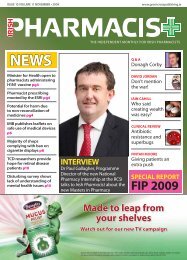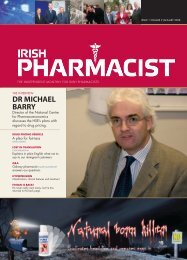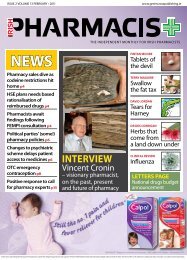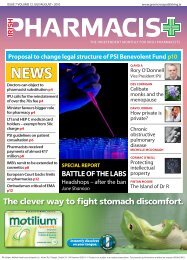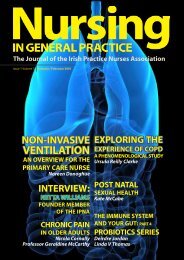Pharmacy Assistant - Green Cross Publishing
Pharmacy Assistant - Green Cross Publishing
Pharmacy Assistant - Green Cross Publishing
You also want an ePaper? Increase the reach of your titles
YUMPU automatically turns print PDFs into web optimized ePapers that Google loves.
nutrition<br />
how do we recognise<br />
malnutrition?<br />
As so many issues surrounding nutrition become more<br />
and more topical, we must not forget to look at the<br />
ever increasing problem of malnutrition in society.<br />
It is reported that malnutrition affects up to 60 per<br />
cent of patients admitted to hospitals, which must<br />
lead us to believe that it frequently goes undetected<br />
and untreated in the community.<br />
So, how can we define malnutrition? There is<br />
no generally accepted definition, but it can be<br />
summarised as a poor nutritional state, most<br />
commonly under nutrition due to shortage of<br />
energy or deficiency of all or certain nutrients.<br />
It is well documented that poor nutrition has a<br />
significant negative effect on the quality of life of<br />
patients; this is particularly true of elderly patients.<br />
Poor nutrition can:<br />
- delay wound healing<br />
- reduce a patient’s response to therapy<br />
- decrease a patient’s resistance to infection.<br />
The provision of oral nutrition supplements is<br />
an effective means of enabling patients to meet<br />
their nutritional requirements, thereby improving<br />
associated problems, such as poor wound healing<br />
and reducing the incidence of infections, depression<br />
and fatigue (Breslow 1993, Martyn et al 1998). While<br />
these and many other problems can be commonly<br />
associated with the acute hospital setting, there<br />
are studies that show the impact in the community<br />
setting also. Studies have indicated that when<br />
compared with non-malnourished patients,<br />
malnourished patients have:<br />
- a six per cent higher GP consultation rate<br />
- require nine per cent more prescriptions<br />
- have a 25 per cent higher hospital admission rate<br />
(Martyn et al 1998).<br />
Whereas severe malnutrition is easily recognised,<br />
less severe forms of malnutrition may be more<br />
difficult to identify.<br />
In order to treat the underlying malnutrition we<br />
pharmacy assistant 7



